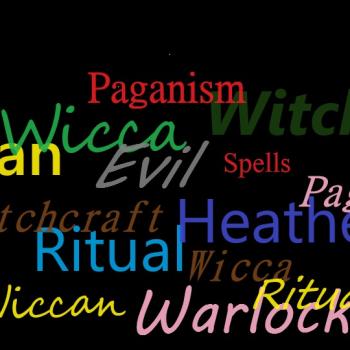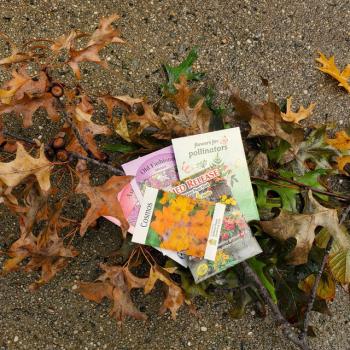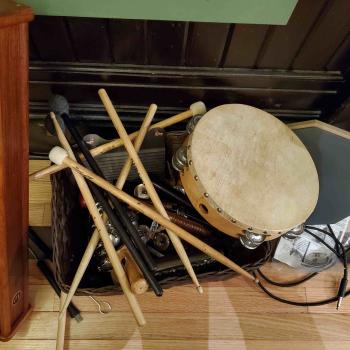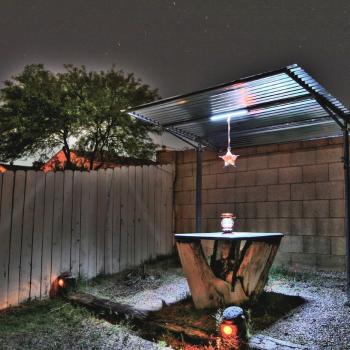I have a dear friend and colleague who came up in a UU congregation where anything that smacked of Christianity was censored. Words to choral music were changed. Sermons were carefully written to avoid words like “God.”
My friend is a UU Christian. And she finally got up the gumption to start a small Christian fellowship for others in her congregation. They shared service together once a month and even (gasp) had Communion. And while she carved out a space, it was difficult to engage the larger congregation in a shared conversation or experience.
I belonged to an institution where all manner of Earth-centered traditions were welcome. Wicca and Wicca-influenced Paganism. Norse traditions. African diaspora religions. Our motto was that we were a “Place for All Paths.”
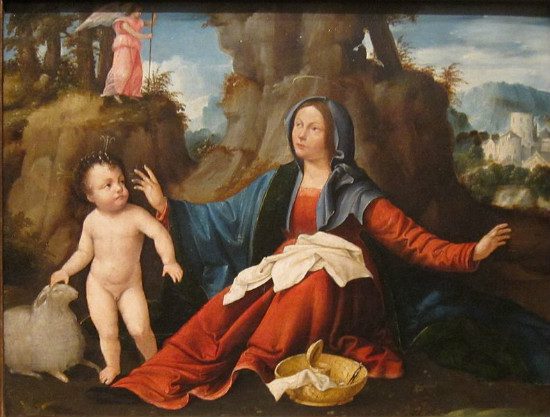
All Paths But One
All paths, that is, except Christianity.
So many of us in Pagan and UU communities have been wounded by Christianity, Christians, and Christian environments, it’s understandable that we’d carry grudges where our wounds are unhealed. Or where the scars are stiff. Where when it rains, our spiritual joints ache.
Whatever else is true, there are an awful lot of Christians doing a lot of harm in the United States every day. They aren’t alone, and it’s certainly the case that an awful lot of Christians are among the most progressive, brave, and trailblazing people in this country. (For example, see the 111 LGBT seminarians and clergy who just came out in the United Methodist Church and the hundreds of clergy from other traditions who have expressed support and admiration of them.)
Mary, Mother of God
In the Christian tradition in which I was raised, Roman Catholicism, there is a figure who rises large, benevolent, and beautiful: Mary, Mother of God. The Theotokos, or, “God-bearer.” Long after I became Pagan, I kept Mary in my heart. (As Mary “pondered all these things in her heart” in the birth narrative in the Gospel of Luke.)
Mary, the teenage mother of questionable virtue. Mary, the one who had within her the very human incarnation of the Universe.
Mary who visited her friend Elizabeth to share the good news of their pregnancies. Mary the one who held her son after he was taken down from the horrific instrument of capital punishment for sedition, the cross. Mary.
So one day, three other women from my Earth-centered community and I cooked up a ceremony to honor and engage Mary, Mother of God. I mean—and I just have to digress for a moment—think on this trope that appears again and again in the Greco-Roman world: The human woman bearing divinity within her. Only in Mary’s case, it’s the Word that was God from before time was time. I could spin off a lot here, but I’ll resist. Admit it—you’re glad.
Back to our story.
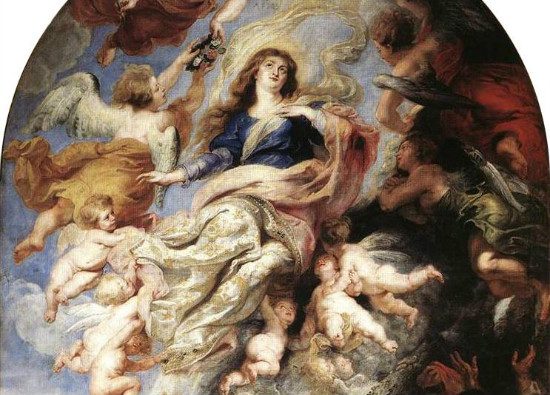
The Context
I was newly returned from a year living in a convent. I had said to one of my sisters—one of
the Sisters of St. Joseph with whom I lived—“If she looks like a goddess, and quacks like a goddess, she probably is a goddess.” My friend (Sr. Mary) shook her head at me and said that she wondered whether the church was big enough for me.
Even when I was Roman Catholic, I was Pagan too. I am no stranger to multifaith identity.
Not only had I returned from a convent, but while I had been there, African Diaspora syncretism had become part of the community. One of the leaders of the community, my original Wicca teacher, had joined an ile (house) of Santeria and had brought teachings, rituals, altars, and understanding to the community.
So all of this was the context in which we worked to create a ceremony that would appeal to Goddess-worshiping, Roman Catholic-leaning, Santeria-learning people who were also skeptical of the value of Christian symbols and spiritual teachings.
The ceremony rested on the Pagan technique of Aspecting. One of the four of us was dressed in gold, one in white, one in red and blue, and one in blue. Our Lady of Charity. Our Lady of Mercy. Our Lady of Perpetual Help, and Our Lady of Sorrows. We prayed. We sat in silence. I prayed the Rosary and chanted the Salve Regina, asking Our Lady of Sorrows to lend me Her spirit, Her understanding, and Her empathy.
I won’t detail the whole ceremony here, but part of the ceremony was that each person brought a stone representing a need, wound, or petition. Each of the participants went to one of the manifestations of Mary, Mother of God, and gave their stone to a dish of water on Her lap. Sometimes words were exchanged. Sometimes they weren’t.
Come, Come to the Water
People who had been terribly hurt in Catholicism came to face the Lady. People who had never thought about Mary came to face the Lady. People who had been brought up to think of the veneration of Mary as abominable idolatry came to face the Lady.
Women who had miscarried and lost children came to Our Lady of Sorrows. Another woman who had planned to kill herself that very weekend came to Our Lady of Sorrows and promised never to plan to do so again. She, through years of depression, is still alive.

People who needed help discerning what to do next came to Our Lady of Perpetual Help. People who had blocks to move out of their lives came to her too.
People with guilt on their hearts came to Our Lady of Mercy, told her what they carried and placed their stones in Her bowl.
And those in need of love, pure and simple, came to Our Lady of Charity and placed their stones of longing into the water.
This ceremony happened something like fifteen years ago. Maybe 13? I’m not sure. A long time ago. And yet I still hear how powerful it was for people.
Why Did This Ceremony Work?
Because it was healing. It took places that were rent apart and knit them together. It took places that were wounded and healed them.
It gave people a way to look into their own hearts and find that Spirit would meet them, heal them, and love them. And that Spirit could appear even in guises that had been used to be hurtful in the past.
That ceremony is just an example I offer to UU’s, Pagans, and UU-Pagans alike. How can we heal the divisions among us? There is now a blogger on Nature’s Path who is humanist and writing about Marcus Aurelius, both Pagan and humanist. How might Pagans in UU environments write ceremony that reaches humanist members of our communities?
One of the most common roles of the witch is that of healer. How can we use our skills at ceremony-building to heal the hearts of our communities? How can we invite and truly welcome others into ritual with us?
How can we embody the Christian holiday of Pentecost, the holiday of hearing and speaking across difference? If we are only ever speaking one language and only to ourselves, what good is our work?








